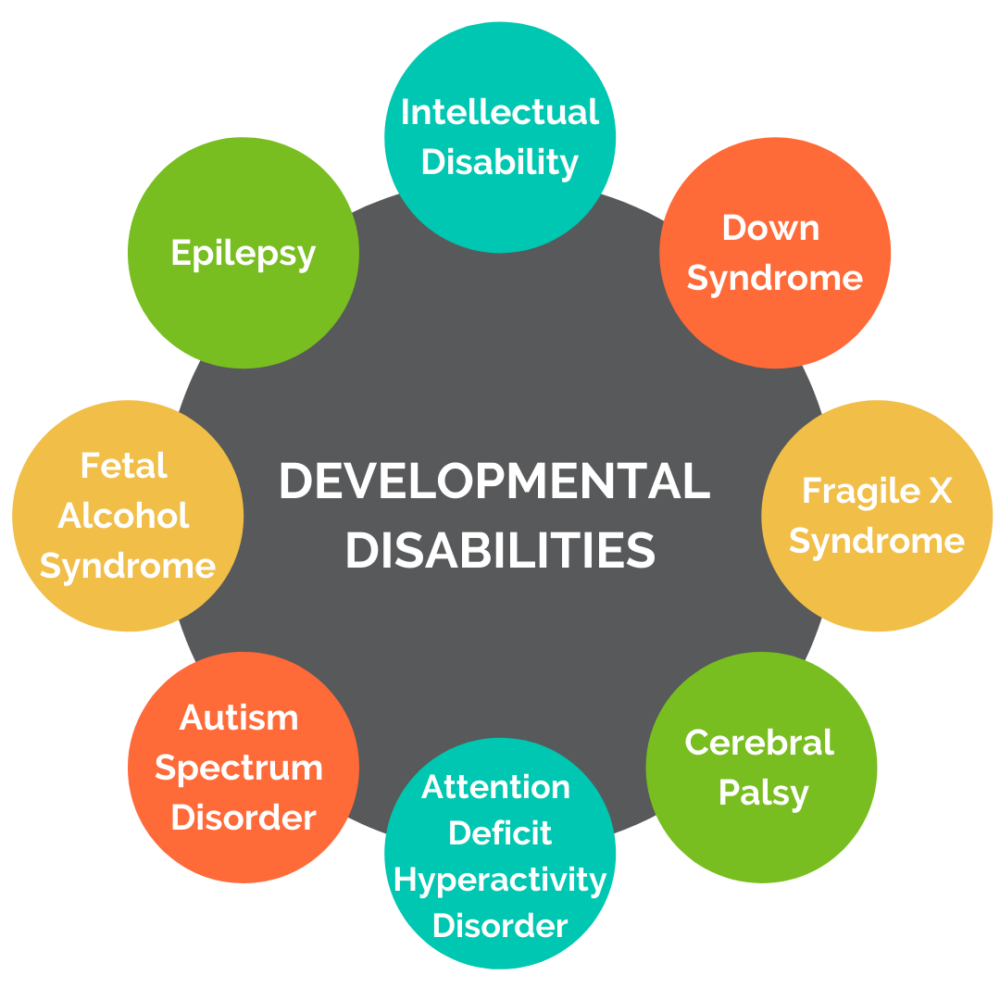[ad_1]
While you may be aware that, since 1995, March has been designated Women’s History Month, March also has a significance that the general public may not be aware of. This is Developmental Disability month as well, as it has been since 1987, when then President Ronald Reagan issued a public proclamation urging Americans to provide “the encouragement and opportunities they need to lead productive lives and to achieve their full potential…”
What is a developmental disability, you might ask? Many professionals describe developmental disabilities as physical, emotional, or intellectual disorders that start before birth or in early childhood. There are five types of developmental disabilities including autism spectrum disorder (ASD), cerebral palsy (CP), intellectual disability (ID), attention deficit hyperactivity disorder (ADHD), and learning disabilities.
Like other marginalized groups, those who are diagnosed with a developmental disability are presented with a variety of challenges. To better address them, the Developmental Disability (DD) Act was signed in the early 1960s, when then President John F. Kennedy first defined Mental Retardation, which is now referred to as Mentally Challenged, or Intellectually Disabled (ID). In following years (1975,1978, 1984, 1987, 1990, 1994 and 2000), new amendments were added, redefining terms like: Independence, Productivity, and Integration, along with the timelines for onset of Disabilities.
How prevalent is developmental disabilities? A May 2022 study revealed that “Recent estimates in the United States indicate that about one in six, or about 17% of children aged 3 through 17 years, have one or more developmental disability. Developmental disabilities are a group of conditions due to an impairment in physical, learning, language, or behavior areas”.
Globally, the number of children with disabilities is estimated at almost 240 million, according to a 2021 UNICEF report. The report includes internationally comparable data from 42 countries and covers more than 60 indicators of child well-being – from nutrition and health, to access to water and sanitation, protection from violence and exploitation, and education. The report further makes clear the barriers children with disabilities face in participating fully in their societies and how this often translates to negative health and social outcomes.
For women and girls, the challenges are compounded by other physical, economic and social difficulties. In the European Union, for example, 44% of women with disabilities are unemployed, compared to 25% of disabled men. Further, the gender pay gap in the EU stands at 12.7 %, and has only changed minimally over the last decade. Of course, since women with disabilities have a higher rate of unemployment, it stands to reason that women are underrepresented in leadership positions as well.
In the United States, it was found that only 18% of the participants in a 2022 study said a leader in their organization has a disability. Additionally, only 0.01% of the population could name a disabled female leader on the world stage as a whole.
Women and girls with disabilities also face shockingly high risks of male violence, with 39-68%in the OECD (Organisation for Economic Co-operation and Development) being sexually abused before their 18th birthday
The statistics for women with disabilities may be disheartening, but there is hope, at least economically. Over the last nine years a new era has been ushered in. Women and men with disabilities in the United States can now open an Able Account, which are tax-advantaged savings accounts for individuals with disabilities and their families. The beneficiary of the account is the account owner, and income earned by the accounts will not be taxed. Further, contributions to the account, which can be made by any person (the account beneficiary, family, friends Special Needs Trust or Pooled Trust), must be made using post-taxed dollars and will not be tax deductible for purposes of federal taxes. However, some states may allow for state income tax deductions for contributions made to an ABLE account.
For the first time in public policy, the ABLE Act recognizes the additional costs of living with a disability, which include those related to raising a child with significant disabilities or a working-age adult with disabilities, accessible housing and transportation, personal assistance services, assistive technology and some types of health care that are not covered by insurance, Medicaid or Medicare.
While this is an important first step, there are numerous other issues that need to be addressed at the federal, state and local level to ensure that all individuals with developmental disabilities, and particularly women and girls, can live a safe, secure and healthier quality of life.
About the Author: Dawn Grabowski is a fellow with The Loreen Arbus Accessibility is Fundamental Program, a fellowship created with Women’s eNews to train women with disabilities as professional journalists so that they may write, research and report on the most crucial issues impacting the disabilities community. Dawn is also an Actress, Filmmaker, Content Creator, Speaker, Voiceover Artist, Producer, & Sit-Down Comic because she’s not qualified to stand. Born with Central – Nervous Disorder Cerebral Palsy, the industry and the world label her as a Person/Performer With Disability (PWD), but she believes labels are for jars and not for people. IG Handle: @grabowskidawn
[ad_2]










If you desire to grow your experience just keep visiting this web
site and be updated with the latest news update posted here.
This post gives clear idea in favor of the new viewers of
blogging, that actually how to do blogging and site-building.
When I originally commented I clicked the “Notify me when new comments are added” checkbox and now each time a comment is added I
get four emails with the same comment. Is there any way you can remove
me from that service? Thanks a lot!
Good article. I’m going through many of these issues as
well..
This is a topic which is near to my heart…
Thank you! Exactly where are your contact details though?
Great work! That is the kind of information that are meant
to be shared across the web. Shame on Google for no longer positioning this publish higher!
Come on over and visit my site . Thanks =)
I do accept as true with all of the ideas you’ve offered for
your post. They are really convincing and can certainly work.
Still, the posts are very quick for newbies. May you please extend them a bit from subsequent time?
Thanks for the post.
Good day! I know this is somewhat off topic but I was wondering if you knew
where I could find a captcha plugin for my comment form?
I’m using the same blog platform as yours and I’m
having problems finding one? Thanks a lot!
If some one wants to be updated with hottest technologies then he must be pay a quick
visit this web page and be up to date all the time.
Asking questions are in fact pleasant thing if
you are not understanding anything completely, however this post provides nice understanding even.
Hi there to all, it’s genuinely a fastidious for me to go to see this website, it contains priceless Information.